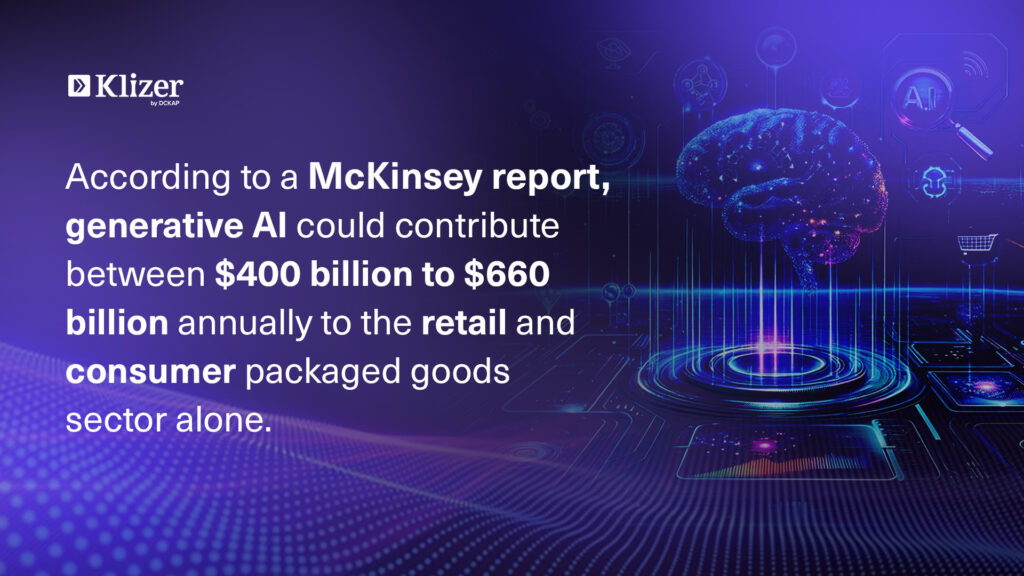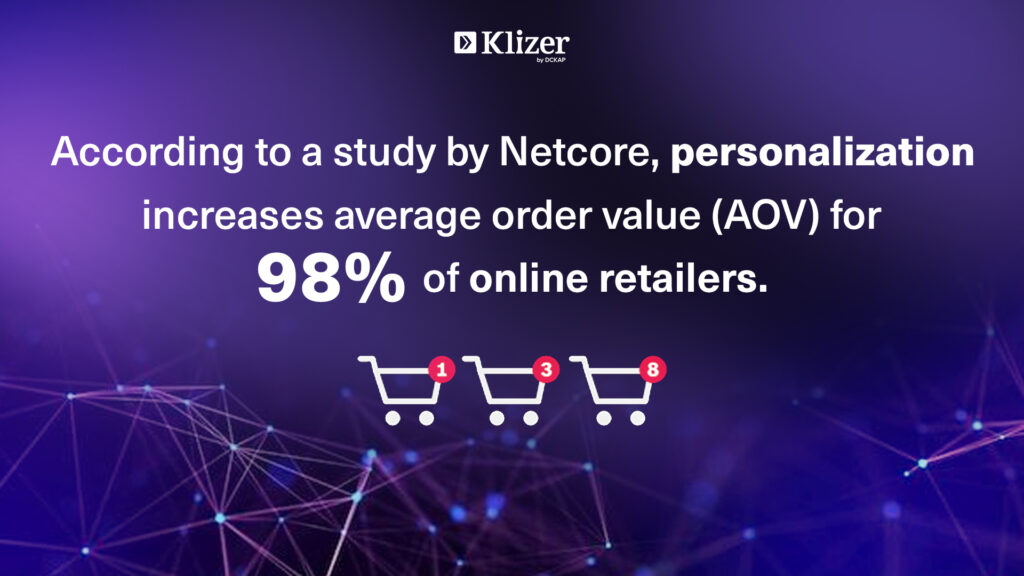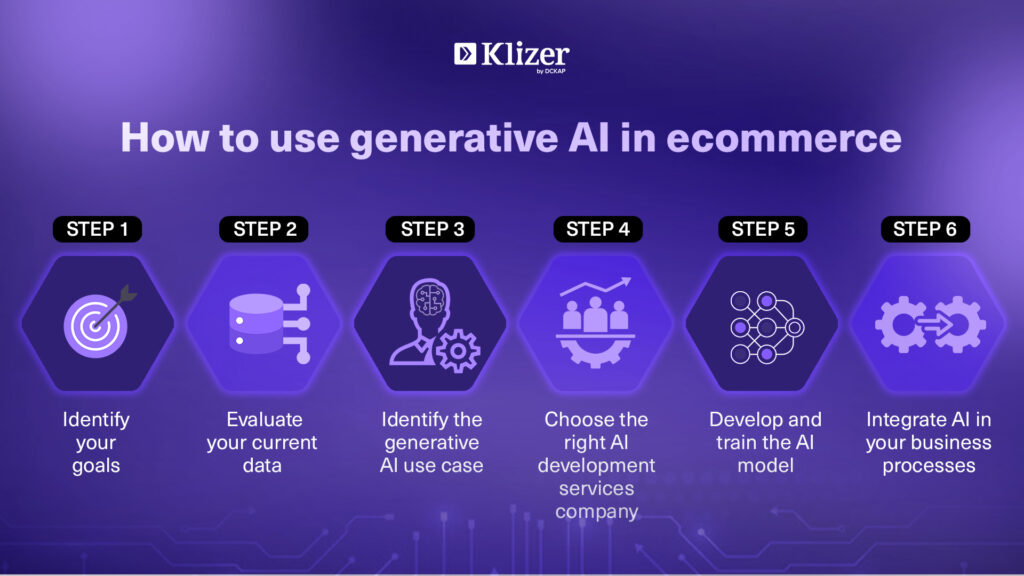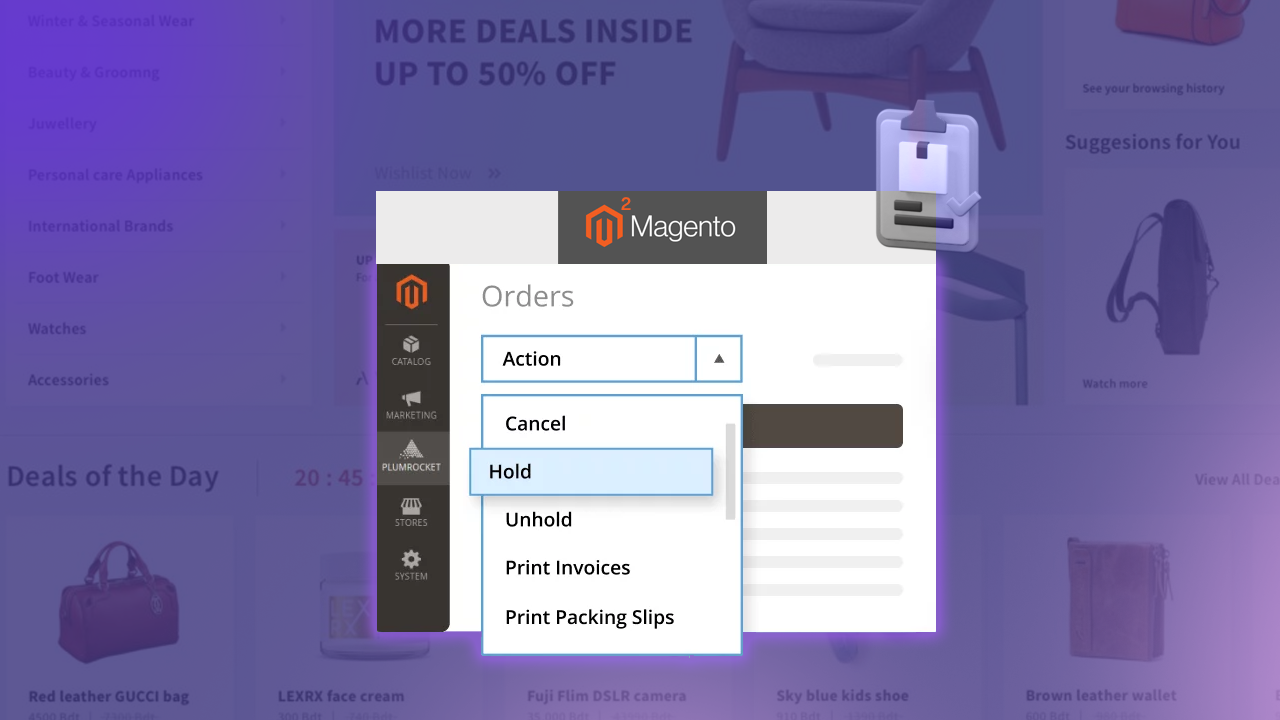Personalization, automation, and efficiency are pretty much the very basic requirements of ecommerce businesses today. Customers are no longer coming to the websites to purchase, they are looking for more. They now need personalized recommendations that enable them to make faster buying decisions, access to instant customer service that addresses their questions in no time, and a lot more.
Generative AI implementation in ecommerce lets them do that, while allowing businesses to maximize their profits, achieve standard customer engagement, and make sure their processes are more streamlined.
This blog is exploring this revolutionary shift in how ecommerce businesses operate with generative AI, what the benefits are, and more. Let’s start.
ON THIS PAGE
What is Generative AI
Have you ever found yourself in a situation where you can’t create content without your team? Generative AI might be the support you’re looking for. It’s a branch of AI that helps generate diverse forms of content, including text, videos, music, images, and audio.
This model uses natural language processing to understand the patterns behind human writing and produce results based on that understanding.
Generative AI for eCommerce Businesses
Generative AI is helping eCommerce businesses to take their services beyond traditional experiences. Online brands can now deliver hyper-personalized, scalable, and engaging digital experiences to their customers.
Large Language Models (LLMs) and multimodal AI allow ecommerce stores to automate product descriptions, generate dynamic ad creatives, personalize email outreach, and even simulate realistic customer interactions.

From AI-generated visuals for product catalogs to chatbots that mimic human-like support, generative AI is empowering ecommerce companies to not only keep up with consumer demands but to stay several steps ahead.
Benefits of Using Generative AI for Your eCommerce Business
Generative AI can work as an extension of your content creation team to deliver great value for your business. It can help create content, automate workflows, and analyse data patterns to deliver a great customer experience. But that’s not all about it.
Here are some key benefits of using generative AI in ecommerce:
- Faster Content Creation to Save Team’s Time for Other Things that Matter: Generative AI can help you read your customers well and deliver the experience they are looking for. It uses this understanding to create blogs, product descriptions, and social media and ad copies in seconds. Internal teams can take a breather here to work on more tasks while ensuring fresh, optimized content across all channels consistently.
- Hyper-personalized Shopping Experiences Drive More Conversions: Generative AI enables content personalization based on what customers are looking for. It can generate custom product descriptions and recommendations, email content, and even landing pages. This helps improve the engagement and conversion rates. According to Salesforce’s State of the Connected Consumer report, 84% of customers say that brands are likely to win their business if they are treated like a human, and not a number.
- Smarter Customer Support Delivers Superior Experiences 24/7: AI-powered chatbots are no longer just machines answering people. They are more context-aware, empathetic, and natural, giving people a more welcoming brand image. Capable of understanding complex queries, learn from past interactions, and delivering human-like assistance round-the-clock, generative AI-based customer support is now delivering customer support more expertly. This has helped businesses reduce the loads on the support team without impacting customer experience.
- Improved Product Discovery and SEO Make Sites More Visible: Your ecommerce website is only as useful as your visibility on the search engines. Generative AI can help draft unique, SEO-optimized product titles, meta descriptions, and category content to make sure your brand is visible in the search results. This automation ensures that every product page is discoverable and aligned with the latest search engine algorithms, boosting organic traffic.
- Creative Asset Generation that Limits Reliability on Other Teams: In addition to the text, generative AI tools can produce visuals, videos, and even voiceovers for product demos, ads, or training content. This helps brands maintain a steady flow of multimedia assets without relying heavily on design teams or external agencies.
- Enhanced Decision-Making with Data to Improve Workflows: Generative AI can synthesize vast datasets to provide actionable insights, simulate market scenarios, and even suggest pricing strategies or inventory shifts. This predictive ability enables data-backed decisions that improve operational efficiency and profitability.
- Cost and Time Efficiency: By automating repetitive and time-intensive tasks, generative AI reduces operational costs while freeing up human teams to focus on strategy, innovation, and relationship-building.
Generative AI Use Cases in eCommerce
1. Custom Product Recommendations
The businesses need to know about their customers in order to succeed. Generative AI helps you gain that edge by providing you with important insights such as browsing history, purchase patterns, engagement, and more to recommend products. This personalization helps businesses drive more conversions and delight customers.

Beyond individual preferences, generative AI considers contextual factors such as current trends, seasonal preferences, and inventory levels. This ensures that product recommendations are not only personalized but also timely and relevant, aligning with external factors that influence purchasing decisions. For instance, AI-powered product suggestions can elevate sales by as much as 20% while reducing cart abandonment.
2. Dynamic Pricing
Dynamic pricing, powered by generative AI, helps adjust prices in real-time based on various factors to maximize their profits. The tools analyse a wide range of data such as historical sales data, competitor pricing, customer behavior, market trends, and inventory levels, among other things.
Not only this, but these models also help to forecast demand fluctuations with great accuracy. For instance, if the shoppers are buying more stationery items over a specific period, it adjusts the pricing to ensure customer satisfaction as well as maximum revenue for the brand.
According to BGC, retailers using dynamic pricing strategies increase their gross profit by 5% to 10% while sustainably enhancing revenue and improving customer value perception. Moreover, AI-powered dynamic pricing strategies have the potential to increase profitability by up to 22%, thanks to their ability to adapt to market conditions, competitor activity, and demand.
3. Virtual Shopping Assistants
Speed in customer service can make a big impact. Hubspot’s study shows that 90% of customers consider an immediate response important when they have a question, with 60% defining “immediate” as within 10 minutes.
Virtual shopping assistants help you achieve this quality mark by offering real-time, personalized support that engages customers and drives sales. Since these solutions are AI-powered, they are capable of mapping customers’ purchase journeys, offering the right product recommendations, answering queries, and assisting with purchase decisions. This is not even the best part- they can do it simultaneously for multiple customers 24/7, something which is unreasonable to expect from humans.
AI-powered virtual assistants can be integrated across channels, including but not limited to websites, mobile apps, social media, and messaging applications. This omnichannel presence helps customers receive an instantaneous response consistently.
4. Automated Content Creation
Generative AI’s content creation can take your marketing efforts to the next level. These tools are capable of analysing the product data to extract key features and attributes using natural language generation techniques to create high-converting product descriptions. Additionally, it can quickly turn text into images, videos, and more content forms without impacting quality.
This level of automation allows the ecommerce businesses to ensure consistent brand messaging across various platforms like websites, social media, email copies, and more. It also significantly reduces the amount of time and resources required for manual content creation.
5. Supply Chain and Inventory Management
Generative AI is making supply chains run better and faster. It looks at data to predict demand, so companies can manage inventory more easily, avoiding both running out of stock and having too much. It also recommends the best times to restock based on current stock and storage space, which helps lower storage costs.
In manufacturing, GenAI helps plan schedules using available resources and priorities to avoid delays. For buying and sourcing, it takes care of routine tasks like creating purchase orders and RFx documents, saving time and money.
GenAI also helps spot risks early by keeping an eye on supplier performance and market changes, so businesses can fix problems before they grow. In shipping, it finds faster routes and makes deliveries more efficient. It also automates reports and data analysis, letting teams focus on bigger goals. And it supports sustainability by finding ways to reduce emissions and use ethical sourcing.
6. Analytics
Analytics are an important part of running a business. Without the right data at your fingertips, you cannot make effective decisions to optimize your workflows and increase revenue. Generative AI can help make this analysis even faster by identifying huge data patterns, outliers, and missing data instantly. While leading to cleaner data, it also helps drive business growth by providing the right data.
7. AI-Generated Audio Summaries
Who has the time to check the entire web page for product descriptions, reviews, and other content? Not you, and neither do the customers. Which is why brands, even giants like Amazon, are using generative AI for creating summaries of the product pages. This allows users to receive product information audibly, enhancing accessibility and convenience.
8. AI-Powered Store Creation
Even though the best way to develop an ecommerce store is via an ecommerce development company, technology providers like Shopify are helping businesses make the process faster. Their “AI Store Builder” uses generative AI to create fully functional online stores based on descriptive keywords. This tool generates complete store layouts, including images and text, streamlining the setup process for merchants, who can later connect with an ecommerce development services provider to enhance their store.
How to use generative AI in ecommerce

There’s no doubt that generative AI use cases in ecommerce are changing the way all the processes work. Brands now have a better handle on data and can achieve better results. At the same time, with customer experience at its peak, the shopping experience is even more conversion-oriented.
If you’re an ecommerce business owner who wants to implement generative AI in your ecommerce business, here’s a detailed guide on how to use generative AI in ecommerce:
1. Identify what you want to achieve
The first step is to know what you want to achieve with generative AI. Some of the common goals include:
- Hyper-personalization to enhance customer engagement
- Automating content creation for product descriptions and marketing materials
- Optimizing inventory management and supply chain operations
- Improving customer support with AI-driven chatbots
2. Evaluate your current data
Data is an important component of AI. You need high-quality, well-structured data for generative AI implementation. Start assessing your current data by:
- Ensuring data is clean, consistent, and detailed
- Integrating data from multiple sources, such as customer interactions, sales, and inventory systems
- Implementing data governance policies to maintain data integrity and compliance
3. Identify the generative AI use case you want to implement first
Go through your processes and identify the areas where generative AI can deliver value for your ecommerce business. We’ve highlighted these use cases above.
4. Choose the right AI development services company
Once you have finalized the kind of AI implementation you need, work on finding the right custom AI development team. Assess the potential partners based on their technical capabilities, the kind of services they provide, and their past customer reviews. While you can also go for pre-trained models here, having your custom AI solution built is the best way to go. It allows you to have the solution that works for your challenges. At the same time, you can also innovate in the future and build an AI solution that’s customized to your business.
5. Develop and Train an AI Model
Once you have chosen the AI development company, the next step is to develop and train the AI model. Here’s what it includes:
- Clean and preprocess data to ensure quality inputs for model training
- Use historical data to train models, ensuring they learn relevant patterns and behaviors.
- Evaluate model performance using test datasets to ensure accuracy and reliability.
6. Integrate AI into Business Operations
Deploy the trained AI models into your live environment by:
- API Integration: Connect AI functionalities to your ecommerce platform through APIs
- Workflow Automation: Incorporate AI outputs into existing business processes for tasks like customer service and inventory management
- Staff Training: Educate employees on using AI tools effectively within their roles
Take-home Message
Generative AI in ecommerce is offering the competitive advantage businesses have always been looking for. From personalized shopping experiences to dynamic pricing to smarter supply chain management, the potential of generative AI use cases in ecommerce is huge and constantly growing. The only trick is to start small, identify the use case correctly, and gradually build AI into your workflows.
So if you’ve been wondering how to use AI in ecommerce, now is the time to act. Whether it’s upgrading your content engine, improving search visibility, or making smarter inventory decisions, ecommerce AI tools are ready to deliver real results.
Looking for expert help in AI Solutions for eCommerce? Klizer is here to help! Drop us your requirements and get started.







